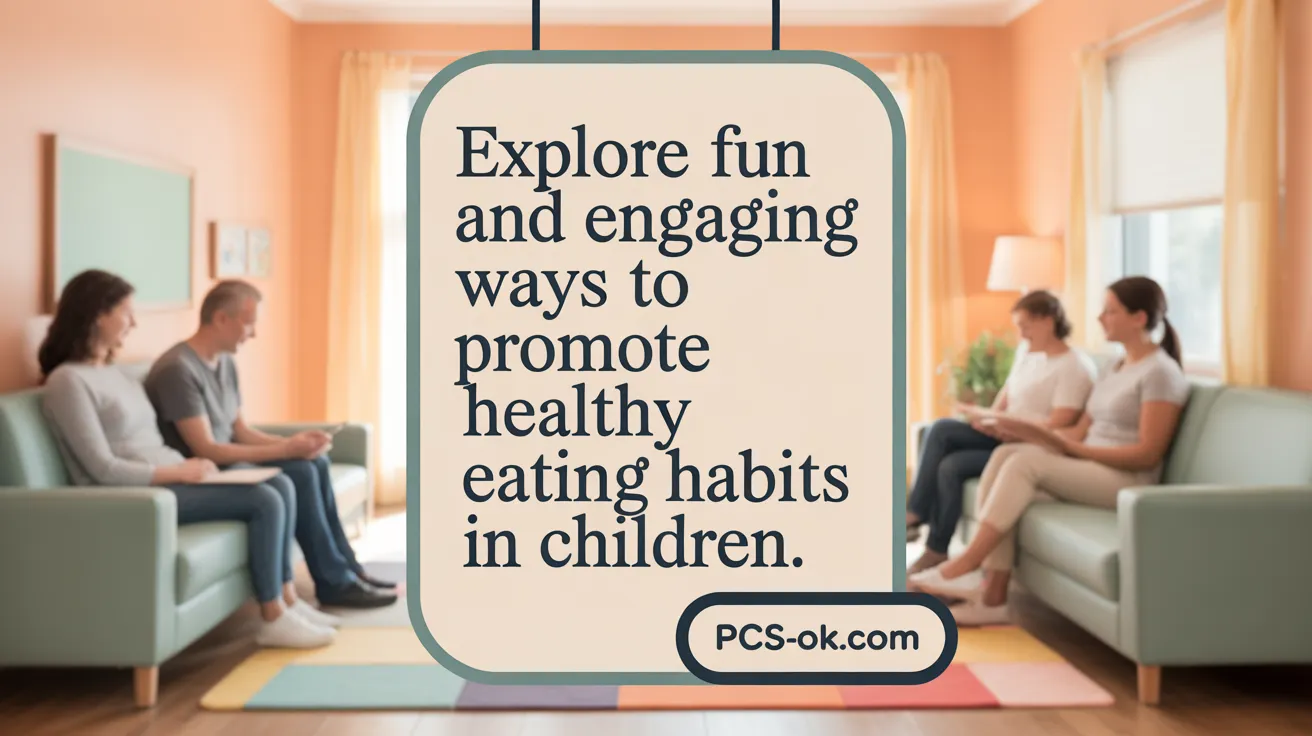Strategies for Introducing New Foods to Picky Eaters
Understanding Picky Eating in Childhood
Picky eating is a common developmental phase many children experience, typically between the ages of 2 and 4. Rooted in evolutionary instincts like neophobia—the natural fear of unfamiliar foods—this behavior serves as a protective measure but can be challenging for parents. Understanding these normal phases, and employing strategic, patient, and research-supported methods, can transform mealtimes and nurture healthier eating habits from infancy through adolescence.
Recognizing and Respecting Normal Developmental Phases of Picky Eating

Children often go through a natural picky eating phase between the ages of 2 and 4. During this time, many children display strong food preferences and may reject unfamiliar foods. This behavior is rooted in neophobia, an innate fear of new foods that has evolved over time to protect children from potential toxins. This age-related phase is typical as children assert independence and explore their sensory boundaries.
Picky eating usually peaks around age 3, with most children gradually expanding their diet as they grow older. By age 5, many kids outgrow these behaviors; however, some children might continue to show selective eating habits for a longer period. It’s important to understand that this stage is a normal part of development and can be managed effectively with patience and persistence.
Repeated exposure plays a significant role in helping children accept new foods. Offering a new food 8 to 15 times, often in small portions, increases the likelihood of acceptance. Establishing routine mealtimes and creating a positive, distraction-free environment also encourages children to try new foods confidently. Overall, understanding that picky eating is part of growing up allows parents and caregivers to approach the phase with empathy and supportive strategies.
Effective Strategies for Introducing New Foods to Picky Eaters

What are effective strategies for introducing new foods to picky eaters?
Introducing new foods to children who are selective eaters requires patience, creativity, and consistency. One of the most important approaches is repeated exposure. Parents and caregivers should serve new foods alongside familiar favorites, offering them multiple times—often more than 10 to 15 times—before children are willing to accept them. Each exposure helps children become more comfortable with the taste, texture, and appearance of new foods.
Involving children in meal planning and preparation can significantly increase their interest and willingness to try unfamiliar items. Simple activities like grocery shopping, washing vegetables, or helping to cook meals foster a sense of ownership and curiosity about the food.
Creating a pleasant and engaging mealtime environment also plays a vital role. Using colorful presentation, fun shapes, or themed activities makes the process of trying new foods exciting. For example, turning vegetables into fun faces or rainbow plates captures children’s attention and reduces resistance.
Modeling healthy eating habits by adults and peers can inspire children to imitate those behaviors. When kids see family members enjoying a variety of nutritious foods, they are more likely to mimic such preferences.
Maintaining a calm, pressure-free setting during meals is equally essential. Avoiding force, bribery, or negative reactions helps children associate mealtimes with positive experiences.
Gradually introducing textures—starting with smooth or mashed foods and moving toward more textured options—helps children adapt as their chewing skills develop. This stepwise approach prevents overwhelming children and builds their confidence in trying new textures.
In cases of severe refusal or aversions, consulting healthcare professionals specialized in pediatric nutrition or behavioral therapy can provide tailored strategies to overcome eating challenges. Overall, persistence, kindness, and creativity are the cornerstones of encouraging healthy eating habits in picky eaters.
Parental Guidance: Helping Children Overcome Picky Eating Behaviors

Creating a positive and consistent mealtime environment is crucial in encouraging children to try new foods. Establishing routines, such as eating around the same time each night and keeping mealtime distractions to a minimum, helps children feel secure and more willing to explore new tastes.
Involving children in food preparation and meal-related activities can significantly increase their interest in eating. Let them participate in grocery shopping, washing vegetables, or making simple dishes. These activities foster a sense of ownership and curiosity about the food they will eat.
Setting clear limits in a calm manner is also important. For example, requiring a child to taste a new food before having dessert, and not reacting negatively if they refuse, helps build a respectful and stress-free eating environment. Consistent reinforcement of these limits encourages children to develop patience and openness.
Praising children when they make an effort to try new foods reinforces positive behavior. Use encouraging words and celebrate small successes, which can motivate them to be more adventurous with their eating habits.
The importance of patience cannot be overstated. It often takes multiple exposures—sometimes up to 15 times—for a child to accept a new food comfortably. Repeating the presentation of the same food in different ways, without pressure, gradually builds acceptance and confidence.
Avoiding negative reactions such as forcing or bribing children helps prevent mealtime stress and resistance. Instead, model healthy eating by enjoying a variety of foods yourself, and introduce new foods gradually. If a child’s selective eating persists or involves extreme behaviors like significant weight loss or distress, seeking advice from a healthcare professional or specialist can provide additional support.
By combining these strategies—positive routines, involvement, calm limits, praise, and patience—parents can create a supportive environment that nurtures a child’s curiosity, confidence, and acceptance of a varied diet.
When and How to Seek Professional Help for Picky Eating

Parents may wonder when it is necessary to involve professionals in managing their child’s picky eating habits. Typically, help should be sought if the child’s selective eating pattern becomes severe, persistent, or starts to interfere with their overall health, growth, or development. Signs that warrant professional intervention include refusing to eat a variety of foods over a prolonged period, sticking to less than 20 foods, experiencing noticeable weight loss, or falling off growth percentiles.
Additionally, behaviors such as choking, gagging, complete refusal of entire food groups, or extreme distress during mealtimes are indications that consulting a healthcare provider is important. These signs suggest there may be underlying sensory, behavioral, or medical issues needing specialized attention.
Early assessment and intervention are beneficial. Pediatricians, dietitians, and feeding therapists can evaluate if sensory sensitivities, medical conditions, or behavioral challenges are contributing to the picky eating pattern. They can also recommend tailored strategies or therapies to support healthier eating habits.
If mealtimes are consistently stressful, or if a child’s eating habits significantly impact social participation or daily life, seeking help becomes crucial. Addressing these issues early can promote better nutrition, development, and a positive relationship with food.
For more information, searching “professional help for severe picky eating in children” can provide valuable resources and options for support.
The Role of Nutrition Education and Sensory Activities in Encouraging Healthy Eating

How can child nutrition education and sensory activities encourage healthy eating habits?
Child nutrition education combined with sensory activities plays a vital role in developing children’s healthy eating habits. These approaches actively engage their senses—taste, touch, smell, sight, and even hearing—to explore and accept a wide range of foods, particularly fruits and vegetables.
In practice, children participate in tasting spicy, sweet, or bitter foods, touching different textures, smelling herbs and spices, and visually examining colorful fruits and vegetables. This hands-on exploration reduces food neophobia, which is the fear or rejection of new foods, by increasing familiarity and comfort.
Fun activities like food tastings, cooking sessions, or sensory games turn mealtimes into positive and playful experiences. For example, making funny faces with vegetables or doing sensory bins with different grains or beans makes trying new foods exciting rather than intimidating. These playful, pressure-free encounters foster positive associations with healthy foods.
Beyond enjoyment, sensory activities help children learn about food groups and nutritional value in engaging ways. Over time, this broader understanding supports increased variety in their diet, contributing to better nutritional intake. Most importantly, these methods encourage children to develop lifelong habits of curiosity, acceptance, and enthusiasm for nutritious foods, setting a foundation for lifelong health.
What research-based strategies improve children’s eating habits?
Research indicates that repeated exposure is one of the most effective strategies for increasing food acceptance among children. Offering the same healthy food multiple times—often 10 to 15 times—is necessary for children to become comfortable and willing to try and eventually enjoy it.
Creating a positive mealtime environment also matters. Establishing regular routines, such as consistent meal and snack times, sitting at the table without distractions, and modeling healthy eating behaviors, encourages better dietary habits. Family participation is crucial; children who observe adults and siblings enjoying a variety of foods are more likely to develop similar preferences.
Educational interventions within schools can strengthen these habits. Providing nutritious meals, involving children in cooking, and teaching about food origins and sustainability motivate children to make healthier choices. Additionally, environmental modifications like accessible healthy options, supporting gardening projects, and limiting exposure to unhealthy food advertising further promote ongoing healthy eating.
Combining these practices with limiting the use of rewards like desserts for eating certain foods—favoring praise and encouragement—creates a whole environment that nurtures long-term positive eating behaviors. When integrated into daily routines and activities, these strategies nurture children’s growth toward healthier lifestyles and habits that can extend into adulthood.
Patience and Positivity: Keys to Expanding Your Child’s Dietary Horizons
Introducing new foods to picky eaters is a journey requiring patience, creativity, and consistency. By understanding that picky eating is often a normal developmental phase, parents can adopt gentle, research-backed strategies such as repeated exposure, involving children in food-related activities, and creating enjoyable mealtime environments. It is essential to respect children’s hunger cues and avoid pressuring them. When challenges become severe, professional guidance ensures the child’s nutritional wellbeing. Above all, fostering curiosity and positivity around food will not only help children overcome pickiness but also lay the foundation for lifelong healthy eating habits.
References
- Feeding a Picky Eater: The Do’s and Don’ts
- Tips to Help Your Picky Eater | Nutrition
- How do I help my picky eater try more healthy foods?
- 7 tips for introducing new foods to picky eaters
- Tips for a Picky Eating Phase
- 6 tips for helping young children try new foods – First Things First
- How To Get a Picky Kid to Eat: 11 Tips for Picky Eaters
- 9 Tips to Help Kids Try New Foods | Parenting…
- How to Overcome Picky Eating as an Adult
